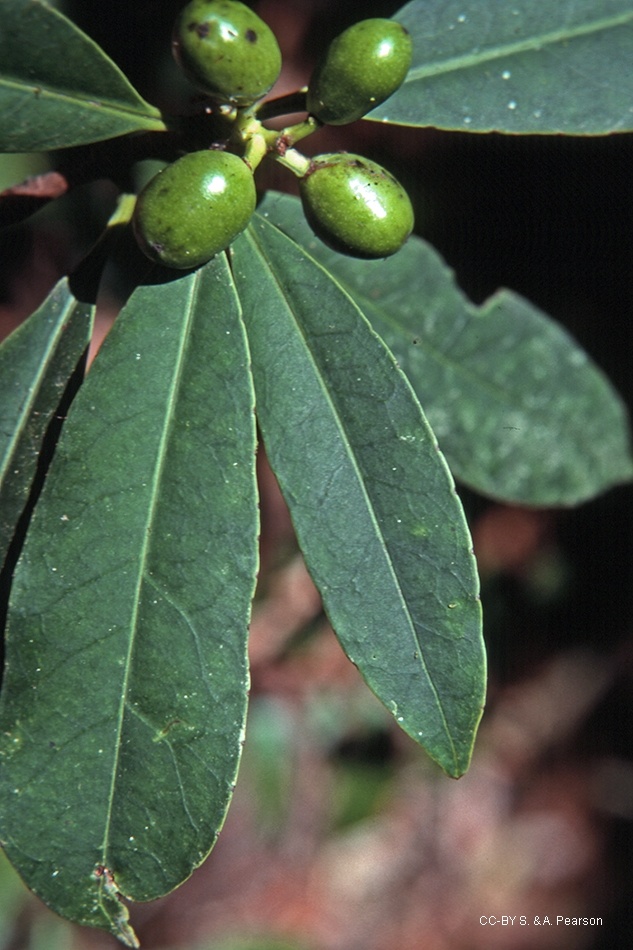Australian Tropical Rainforest Plants - Online edition
Symplocos thwaitesii F.Muell.

Mueller, F.J.H. von (1862), Fragmenta Phytographiae Australiae 3(17): 22. Type: "Ad flumen Hastings in silvis. Dr. Beckler".
Shrub or tree to 20 m; bark dark brown, smooth and becoming pustular on larger trees. Stems hairless. Resting buds enclosed by short pointed green scale leaves.
Leaves simple, alternate. Stipules absent. Petiole 1-15 mm long. Leaf blade oblanceolate, narrowly obovate or elliptic, 6-16 cm long, 1.5-5 cm wide, base cuneate to attenuate, margins irregularly serrate with small teeth, prominent and closely spaced towards apex but sparse towards the base, apex acuminate, acute or obtuse. Lateral veins 8-11 pairs. Domatia absent. Surfaces hairless, midrib yellowish and broad especially towards the base.
Inflorescences axillary, racemose or paniculate, up to 7 cm long, sometimes congested. Pedicels 1-8 mm long. Flowers bisexual, actinomorphic, 5-6 merous. Sepals partially fused, tube 1.7-2 mm long, lobes 1.4-1.6 mm long, depressed obovate, green, glabrous. Petals fused at base, 4.5-7 mm long, spreading, broadly obovate, glabrous, white. Stamens numerous (80-100), filaments unequal, mostly shorter than petals. Disk glabrous; ovary inferior, 3-locular, style 4-5 mm long.
Features not available.
Occurs in CEQ at Mt Parnassus near Rockhampton, and southwards to Victoria. Grows mostly in notophyll vine forest.
This profile information and associated coding has been adapted from Jessup (2011), Harden et al. (2014), and Nooteboom (1982, 2004). The flowers of this genus are reported in Nooteboom (1982; 2004) and Jessup (2011) to be mostly bisexual but also functionally unisexual and dioecious, however this has not been specifically reported for this species.





